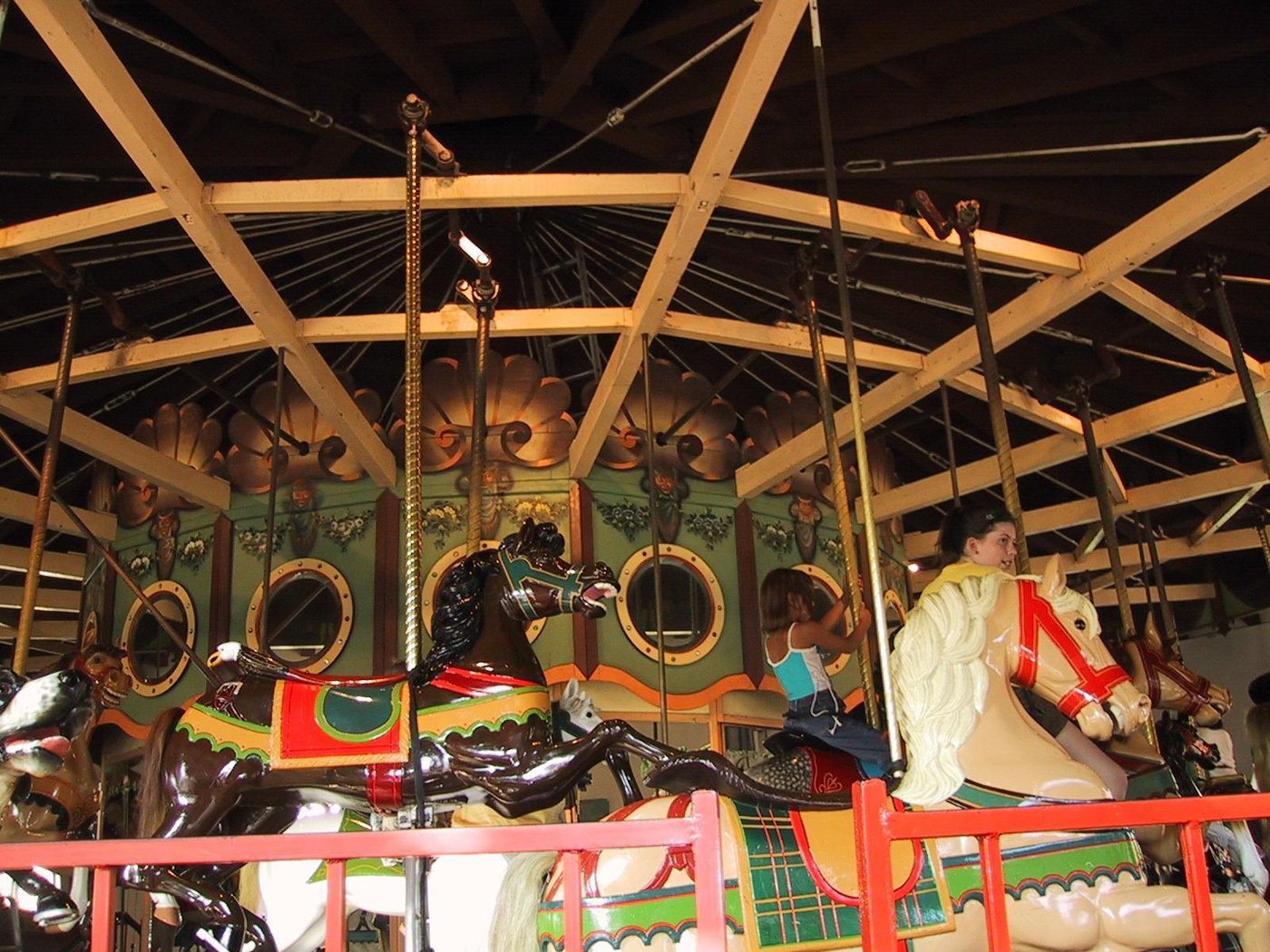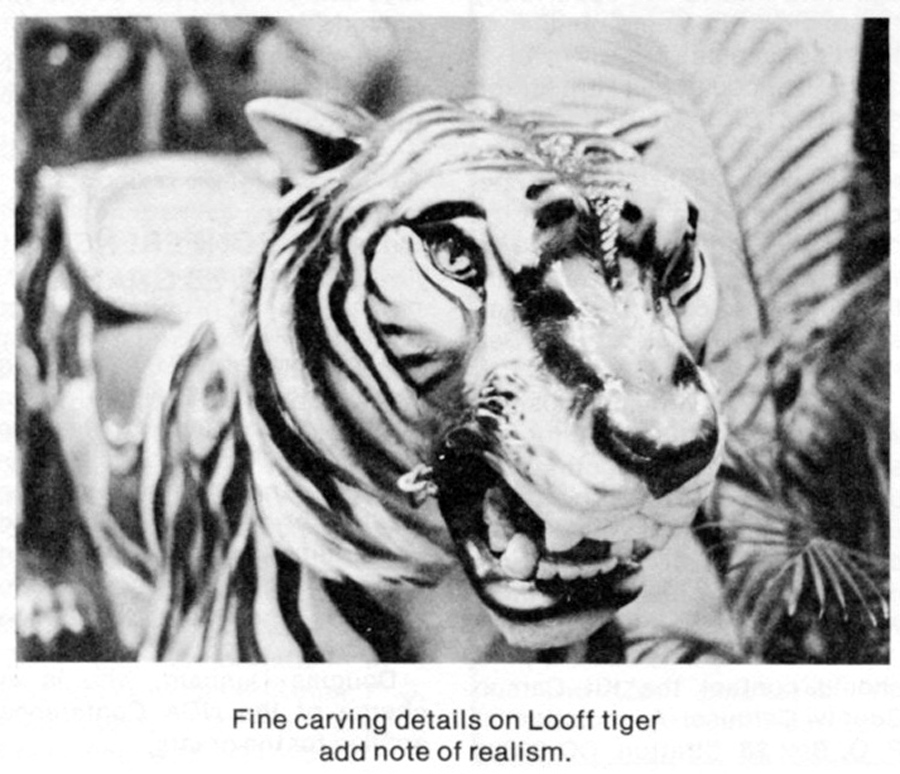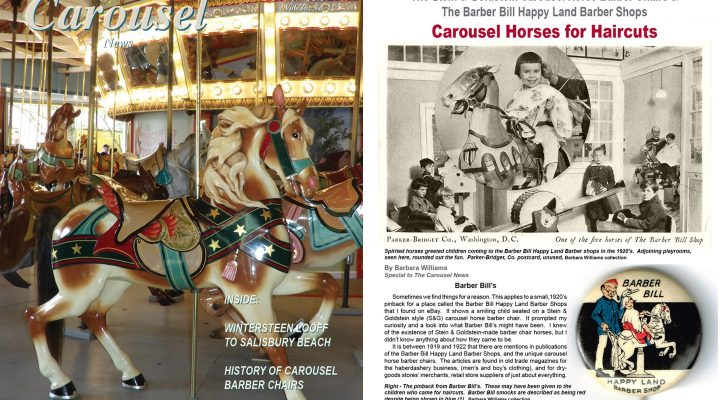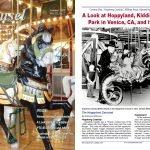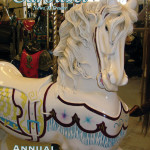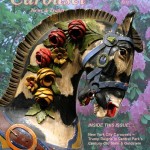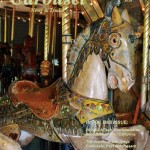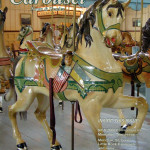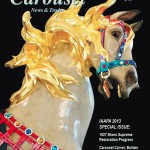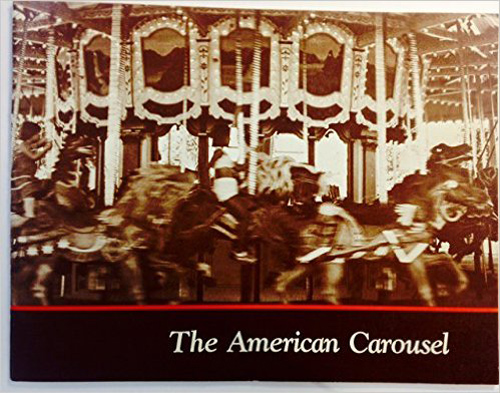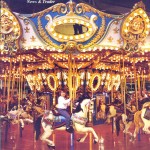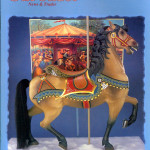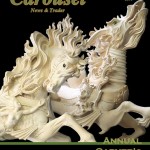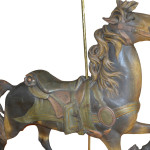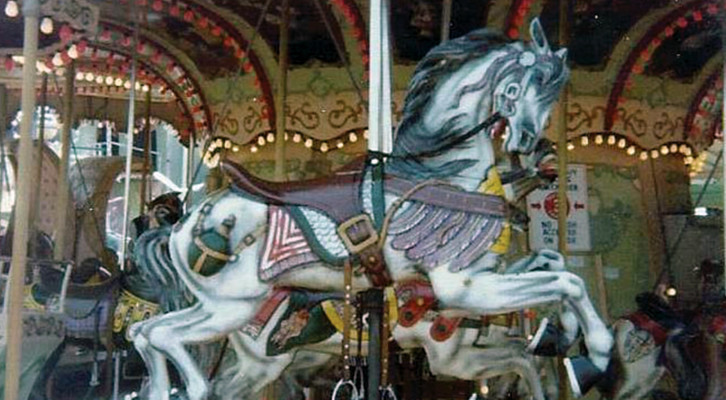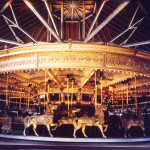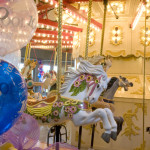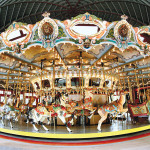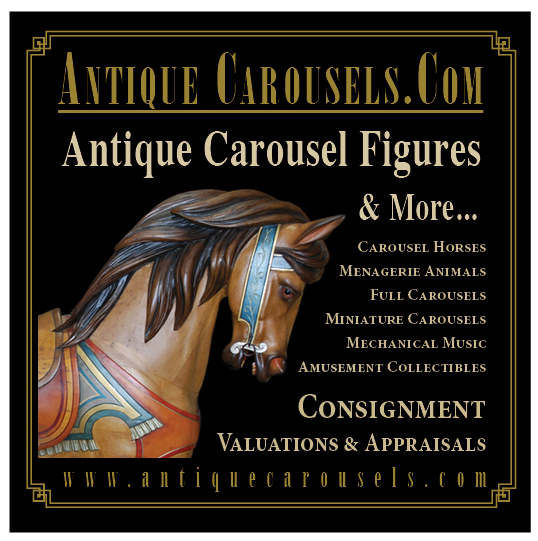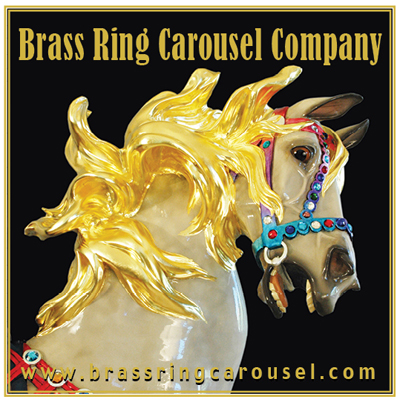The Mystery of the Portsmouth, RI, Island Park Looff
The carousel that once carried Marianne’s “Gamebird” prized horse – Donated to the New England Carousel Museum
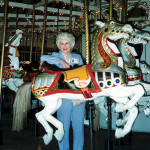 Marianne was one of the foremost authorities on historic carousels in the world. She passed away in the Fall of 2012 – greatly missed by all. Her prized “Gamebird” Looff jumper was appropriately donated to the New England Carousel Museum in Bristol, CT. In effect, a trip home for the horse. Here is Marianne’s story of the Island Park Looff carousel in Rhode Island from which her prized game bird jumper came.
Marianne was one of the foremost authorities on historic carousels in the world. She passed away in the Fall of 2012 – greatly missed by all. Her prized “Gamebird” Looff jumper was appropriately donated to the New England Carousel Museum in Bristol, CT. In effect, a trip home for the horse. Here is Marianne’s story of the Island Park Looff carousel in Rhode Island from which her prized game bird jumper came.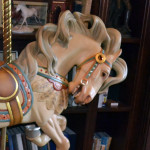
Notes from Marianne…
– From the January 2010 Carousel News & Trader –
By Marianne Stevens
Carousel Historian, Co-Author of “Painted Ponies”.
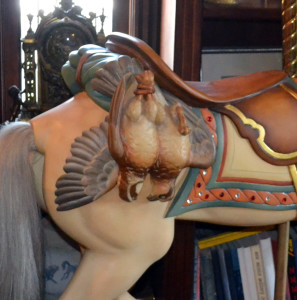 Several years ago, I received a letter from John Pierce, the retired Police Chief of Portsmouth, RI. He grew up riding a carousel he called The Island Park Carousel, and wanted to share his memories with me. He had written a book about Portsmouth and its history.
Several years ago, I received a letter from John Pierce, the retired Police Chief of Portsmouth, RI. He grew up riding a carousel he called The Island Park Carousel, and wanted to share his memories with me. He had written a book about Portsmouth and its history.
I first saw this carousel, now known by a different name, in 1973. You could tell that it had been a beautiful machine when it was new. Years of neglect, exposure to the weather, and the indifference of park maintenance had all but shrouded the beauty under many layers of park paint, and hasty repairs done with nails and duct tape. Yet somewhere under there, the soul of this carousel was crying out to be free.I inquired whether the machine might be for sale. No, the owner said, I’m going to fiberglass them all; these wooden figures are too much trouble.
I saw this Charles Looff machine twice after that, and its appearance saddened me. The owner claimed that he put side curtains on every night, and removed the animals to indoor storage when the season was over. But, the appearance of the figures indicated otherwise.
In 1976, I was in New York City, when a friend called me and said the owner had sold all the wooden figures to a ride broker in Virginia, and had purchased metal horses to use on the frame. He wanted to buy the group, but he needed a partner. This carousel was a mixture of two distinct styles. The stationary figures were from 1885; very early. These consisted of horses, as well as giraffes, goats, a camel, and a setter-type dog.
The jumping horses were much later – about 1906. Many of these had elaborately carved trappings with cherub faces and wings, fruit, feathers, gamebirds, rampant lions and more. I had often wondered where this carousel had come from, as the later figures seemed much too fancy for a small machine. Chief Pierce provided me with the answers. He was raised in Portsmouth, RI, and grew up riding this carousel. It was the second Looff carousel there, being so close to the Looff factory at Riverside.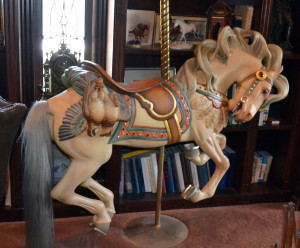
The first carousel installed at Island Park was a stationary menagerie two-row machine which was placed in a building near the ocean in 1898 by the Barker family. In 1905, the Barkers purchased another Looff carousel. It was set up on the South side of the street, and they cannibalized the earlier one. Some of the large outside row stationary figures were retained for the new machine. as well as the giraffes, goats and camels, but most of the rest were sold to barber shops and variety stores. At this point, the figures retained their original paint, according to Chief Pierce. The great hurricane of 1938 wiped out the entire park, except for the merry-go-round. Thus, Island Park, founded in 1897, closed in 1938.
During the 1930s, the Roosevelt administration developed a program to put people to work during the Depression. It was called the Works Project Administration, or the WPA. Many artists were employed painting murals in Court Houses and Civic Centers at that time, For reasons unknown to me, the Island Park carousel was chosen to represent the development of the American carousel industry, and some of the outstanding carvings were incorporated into “The Index of American Design”, a book which covers a broad spectrum of American arts and crafts, using mainly paintings and drawings, instead of photographs. Among the animals used were the outer row giraffe, a goat, a setter-type dog, a roached mane jumper and the gambirds jumper shown on p.119 of “Painted Ponies”, with the tucked head, martingale with feathers, and a pair of gamebirds hanging from the cantle, and a pair of small panthers.
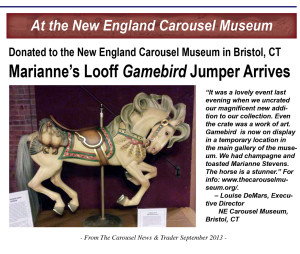 In 1940, the carousel was moved to the newly reopened Riverside Park in Springfield, MA, and operated there until 1943, when it was placed in storage due to war time restrictions. In the spring of 1946, it was installed at Ocean Beach Park, in New London, CT. The carousel had always been operated inside a building until it went to Ocean Beach, one block from the Atlantic Ocean, I am probably correct in assuming that the animals were then in excellent condition.
In 1940, the carousel was moved to the newly reopened Riverside Park in Springfield, MA, and operated there until 1943, when it was placed in storage due to war time restrictions. In the spring of 1946, it was installed at Ocean Beach Park, in New London, CT. The carousel had always been operated inside a building until it went to Ocean Beach, one block from the Atlantic Ocean, I am probably correct in assuming that the animals were then in excellent condition.
How tragic that in the ensuing years. it had so little care that the older animals were almost unsaveable. I restored one one of the crook necked giraffes myself and it was a nightmare. The wood was so punky that I had to use a wood stabilizer on it, and much had to be recarved. The later figures had mainly joint problems, and/or abuse. The beautiful gamebirds horse had a lateral split an inch wide down the entire romance side. Anyone who works with wood, especially old and abused wood, will tell you that the worst thing that you can do is try and close it quickly. That only makes the backside pop open. We placed 4 band clamps around the horse’s body, and turned them a half a turn once a week for six months. That did the job, and it has never cracked. If you try and fill a split that large, it throws the carving off, and makes it look odd.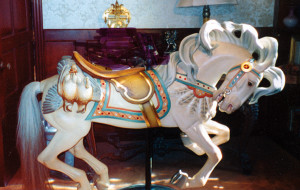
Four of the Island Park’s horses were repaired and put back to work on a large Looff carousel, currently operated at Yerba Buena Gardens, in downtown San Francisco. The styles blend perfectly. The rest went to collectors, who don’t mind time or expense that it will take to bring these marvelous pieces of wooden sculpture back to almost new condition.
I think that this is one case where the animals were saved when their owner sold them.
Happy New Year,
Marianne
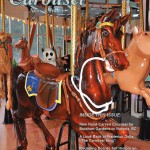 – Reprinted from the January 2010 Carousel News & Trader
– Reprinted from the January 2010 Carousel News & Trader
READ THE FULL JAN. 2010 ISSUE OF CNT ONLINE

